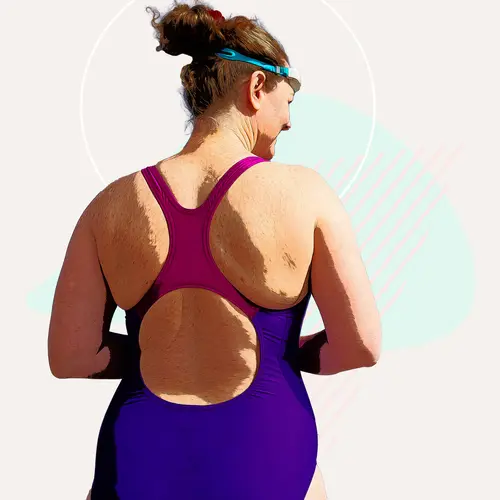About 80% of Americans have low back pain at some point. It’s usually short-lived, but if yours lingers for weeks or months, you may wonder if surgery would help.
Low back pain has many causes. Often it's linked to one or more of the rubbery disks that normally cushion the vertebrae in your spine. A few things can go wrong. Disks can break down (your doctor may say yours has degenerated), so they're no longer able to provide proper support and cushioning.
A disk that slips out of place is called herniated. This is also common. When it happens, the disk may press on your sciatic nerve. That can cause pain that starts in your lower back or buttocks and spreads all the way down your leg.
"Your disks have an outer hard shell and a soft jelly inside, and if you develop a little tear, the jelly-like material can start to push its way out and hit a nerve," says Sheeraz Qureshi, MD, spine fellowship director at The Spine Hospital at Mount Sinai in New York.
The good news is that most people’s disk problems get better without an operation. Anti-inflammatory drugs, physical therapy, and steroid injections can all make a big difference. A little rest -- and patience --help, too.
"About 80%-85% of patients with herniated disks will get better in time," says Carlos A. Bagley, MD, director of the Neurological Surgery Spine Program at the University of Texas Southwestern Medical Center in Dallas.
Not one of the lucky ones? Keep reading.
Who Needs Surgery?
Most people don't. But if you've tried other options for 6-12 weeks, then it might be worth some thought. You may need it sooner if:
- Your pain is severe.
- Your muscles are so weak that you're having trouble moving around.
- You're losing bladder or bowel control because a bulging disk is pressing on a nerve.
Your primary care doctor will probably order imaging tests like X-rays, MRIs, or CT scans. These will give them a better sense of what's causing your pain. They can also help them make sure nothing else is going on in your body that needs medical attention.
What Are the Types of Surgery?
There's more than one way to fix a disk problem. The specifics of your surgery have to do with what's actually wrong with your disks.
Herniated/bulging/slipped disk: The procedure is called microdiscectomy. The surgeon removes the part of the disk that's pushing on a nerve. There are two ways to do this. In the traditional method, the doctor makes an inch-long cut and detaches the muscles on one side of your back. That gives them access to the bony covering where the affected nerve is. Then they can cut out any disk fragments hitting that nerve.
A newer option requires a much smaller incision. Your doctor may refer to it as minimally invasive. Instead of cutting the muscle, they use special tools called dilators that let them get to the nerve. "The main advantage is that you don't have to detach and reattach the back muscles," Qureshi says.
Degenerated disks:If you're in your 60s or older and have a disk problem, there's a good chance it’s worn down. You may also have arthritis in the facet joints of your spine. This can cause the open spaces within your spine to narrow (your doctor will call this stenosis). It puts pressure on the nerves that lie within these bony channels. The surgical solution is to remove any bone spurs and widen the channel. Your surgeon might also place spacers between the vertebrae or fuse a section of them together to help make your spine more stable. This is called spinal fusion.
Spinal disk replacement is another option, but it isn't as popular as it used to be. Some insurance companies won't cover it due to concerns about whether or not it works, Qureshi says. It works best if your disks go bad early, say, in your 20s or 30s, instead of 60 or older.
What to Expect
A microdiscectomy is usually an outpatient procedure, so you'll probably go home the same day. If you need spinal fusion or replacement, you'll likely spend one or two nights in the hospital.
No surgery is risk-free, but all these procedures are considered safe so long as you’re healthy enough to have anesthesia. One possible complication is a "spinal leak headache," which can happen if the membrane around your spinal cord gets punctured and fluid leaks out. But it isn't serious and can be treated easily, Bagley says.
Spinal disk surgery also tends to work well, though the results vary depending on how severe your problem is. A true herniated disk won't ever be totally normal again after surgery, Qureshi says. But the procedure will take the pressure off the nerve and ease your pain. “Ninety-eight percent of patients will never need another surgery on the same spot," he says.
Most people who have lumbar disk surgery have physical therapy afterward. The extent varies by person. Recover from microdiscectomy is pretty quick: You should be walking in a few days, though you'll have to take it easy (no vigorous activity) for the first 4 to 6 weeks to avoid injury, Bagley says.
He also likes to send patients to "back to school." You’ll learn how to bend and lift properly, and you’ll do exercises to strengthen your core. If you go back to doing the same things you did before surgery, he says, you’re more likely to hurt your back again.
If you have spinal fusion or disk replacement, you'll probably need physical therapy for a little longer, because there's more of a change in how your body works, Qureshi says. You can expect to return to your normal level of activity within 2 to 3 months.
